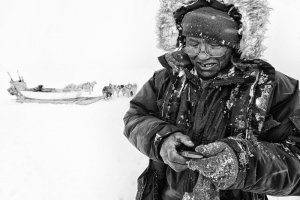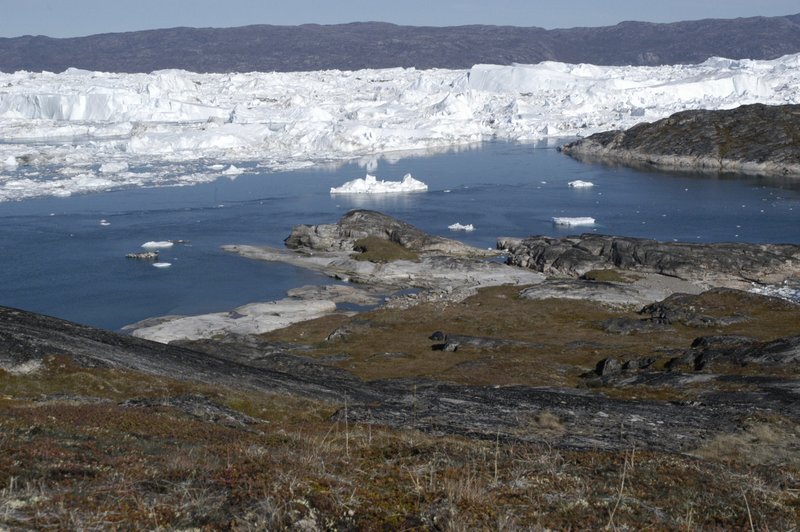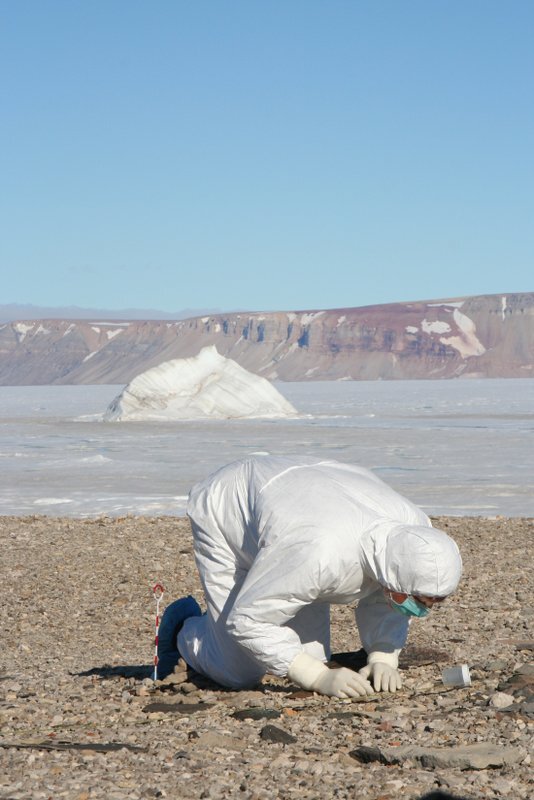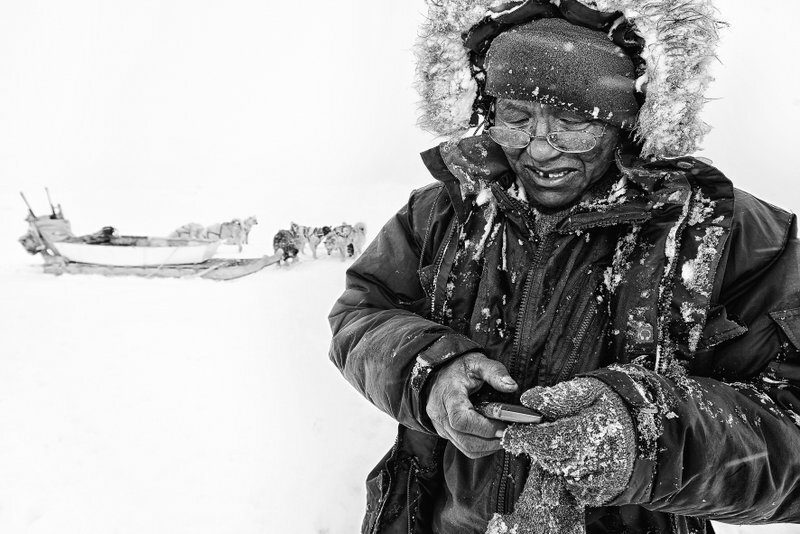
Much has been said and reported about studies and discoveries focusing on searching for the first Americans. Less popularized but equally important has been the ongoing research related to illucidating the picture of how and when the Arctic, the last region of the Americas known to have been populated, was settled.
Archaeological and cultural evidence points to migrations of several different groups, the Paleo-Eskimos, Neo-Eskimos, and Inuits, into the region, going back as far as 6,000 years ago for the earliest arrivals of the Paleo-Eskimos from across the Bering Strait from Siberia.
Now, Maanasa Raghaven of the University of Copenhagen and colleagues have tested this scenario by conducting genomic sequencing on extractions of 169 ancient human bone, teeth and hair samples from Arctic Siberia, Alaska, Canada, and Greenland. They compared them to the same from two present-day Greenlandic Inuit, two Nivkhs, one Aleutian Islander, and two Athabascans.
What they found provides a new picture of the population history of the North American Arctic. Their analyses supports the model of the arrival of Paleo-Eskimos into North America as a separate migration from those which gave rise to Native Americans and Inuit. But the results also suggested they shared a common Siberian ancestor.
“We show that Paleo-Eskimos (~3000 BCE to 1300 CE) represent a migration pulse into the Americas independent of both Native American and Inuit expansions,” write Raghaven, et al. “Furthermore, the genetic continuity characterizing the Paleo-Eskimo period was interrupted by the arrival of a new population, representing the ancestors of present-day Inuit, with evidence of past gene flow between these lineages. Despite periodic abandonment of major Arctic regions, a single Paleo-Eskimo metapopulation likely survived in near-isolation for more than 4000 years, only to vanish around 700 years ago.”*
___________________________
 Qajaa, a grass-covered deep-frozen midden with remains from Early Paleo-Eskimo cultures to the 19th century CE. Ilulissat Icefjord, West Greenland. Courtesy Claus Andreasen
Qajaa, a grass-covered deep-frozen midden with remains from Early Paleo-Eskimo cultures to the 19th century CE. Ilulissat Icefjord, West Greenland. Courtesy Claus Andreasen
__________________________
 Looking for ancient human remains in northern Greenland. Courtesy Claus Andreasen
Looking for ancient human remains in northern Greenland. Courtesy Claus Andreasen
__________________________
 Modern-day Canadian Inuit and their environment. Courtesy Carsten Egevang
Modern-day Canadian Inuit and their environment. Courtesy Carsten Egevang
___________________________
Moreover, the researchers show evidence for gene flow between the Paleo-Eskimos and the Neo-Eskimo Thule culture, though it is likely to have occurred in Siberia, among the two groups’ common ancestral population, and not in the Arctic, where these two groups were largely separated.
The study suggests a complex interplay between genes and culture, helping to provide a clearer picture of how the Arctic was settled.
The study is published as a research article in the journal Science.
____________________________________
*“The genetic prehistory of the New World Arctic,” by M. Raghavan at University of Copenhagen in Copenhagen, Denmark, and colleagues.
Source: Part of this article was adapted and edited from an AAAS press release, Genetic Data Sheds Light on Early Peopling of North American Arctic.
____________________________________
Travel and learn with Far Horizons.
Read about the most fascinating discoveries with a premium subscription to Popular Archaeology Magazine. Find out what Popular Archaeology Magazine is all about. AND MORE:
On the go? Get the smartphone version of Popular Archaeology as an app or as an ebook.
Popular Archaeology’s annual Discovery Edition eBook is a selection of the best stories published in Popular Archaeology Magazine in past issues, with an emphasis on some of the most significant, groundbreaking, or fascinating discoveries in the fields of archaeology and paleoanthropology and related fields. At least some of the articles have been updated or revised specifically for the Discovery edition. We can confidently say that there is no other single issue of an archaeology-related magazine, paper print or online, that contains as much major feature article content as this one. The latest issue, volume 2, has just been released. Go to the Discovery edition page for more information.






